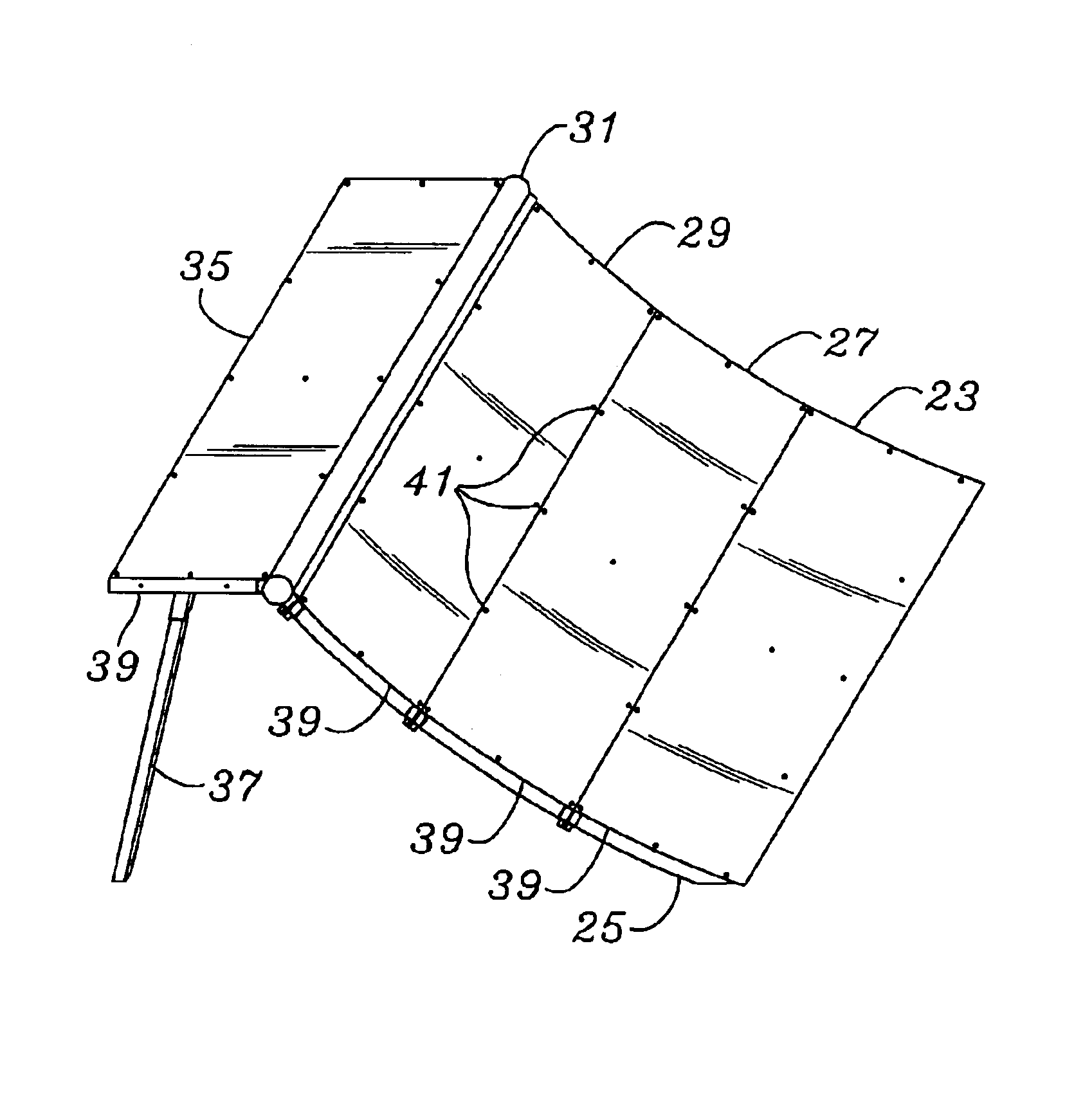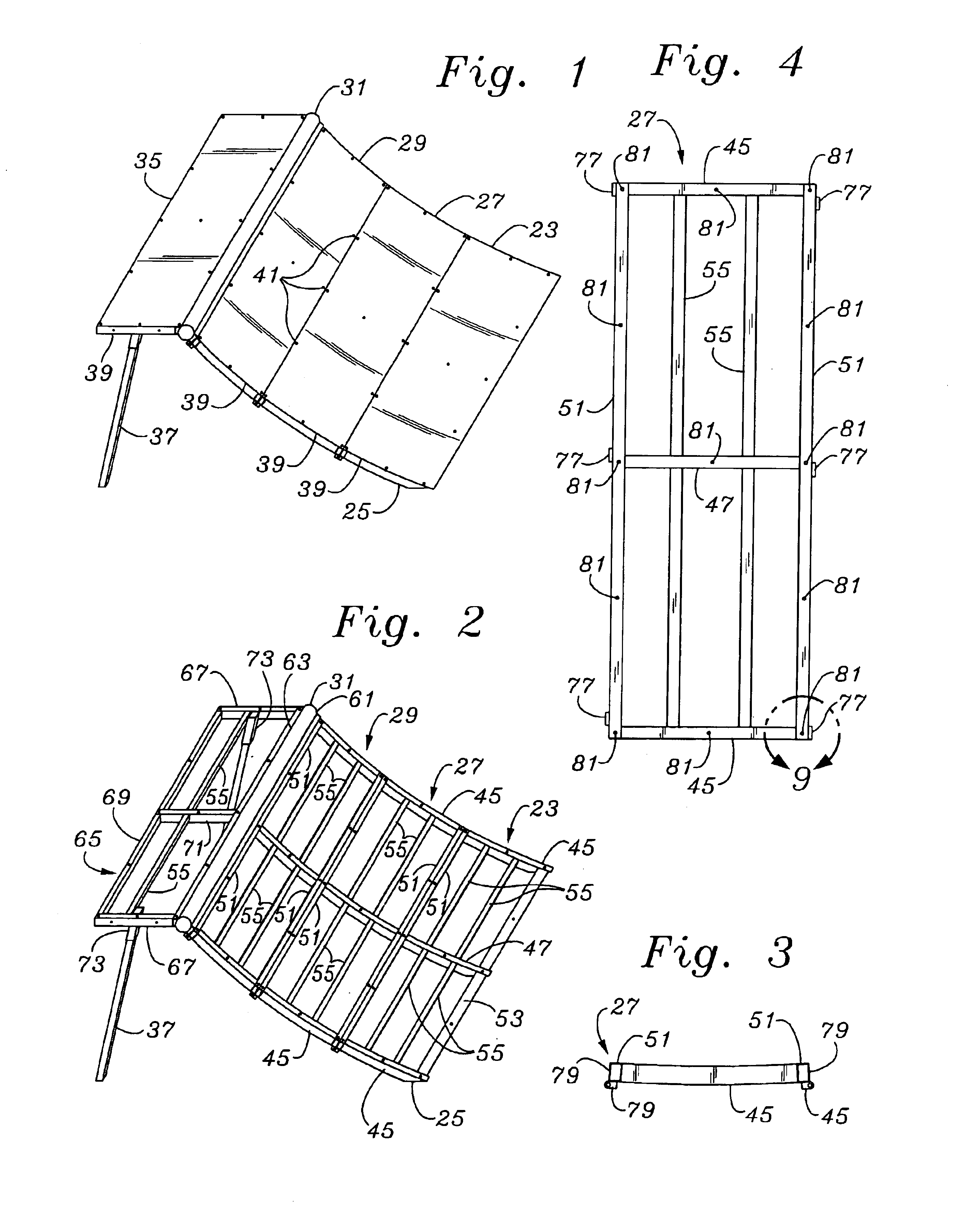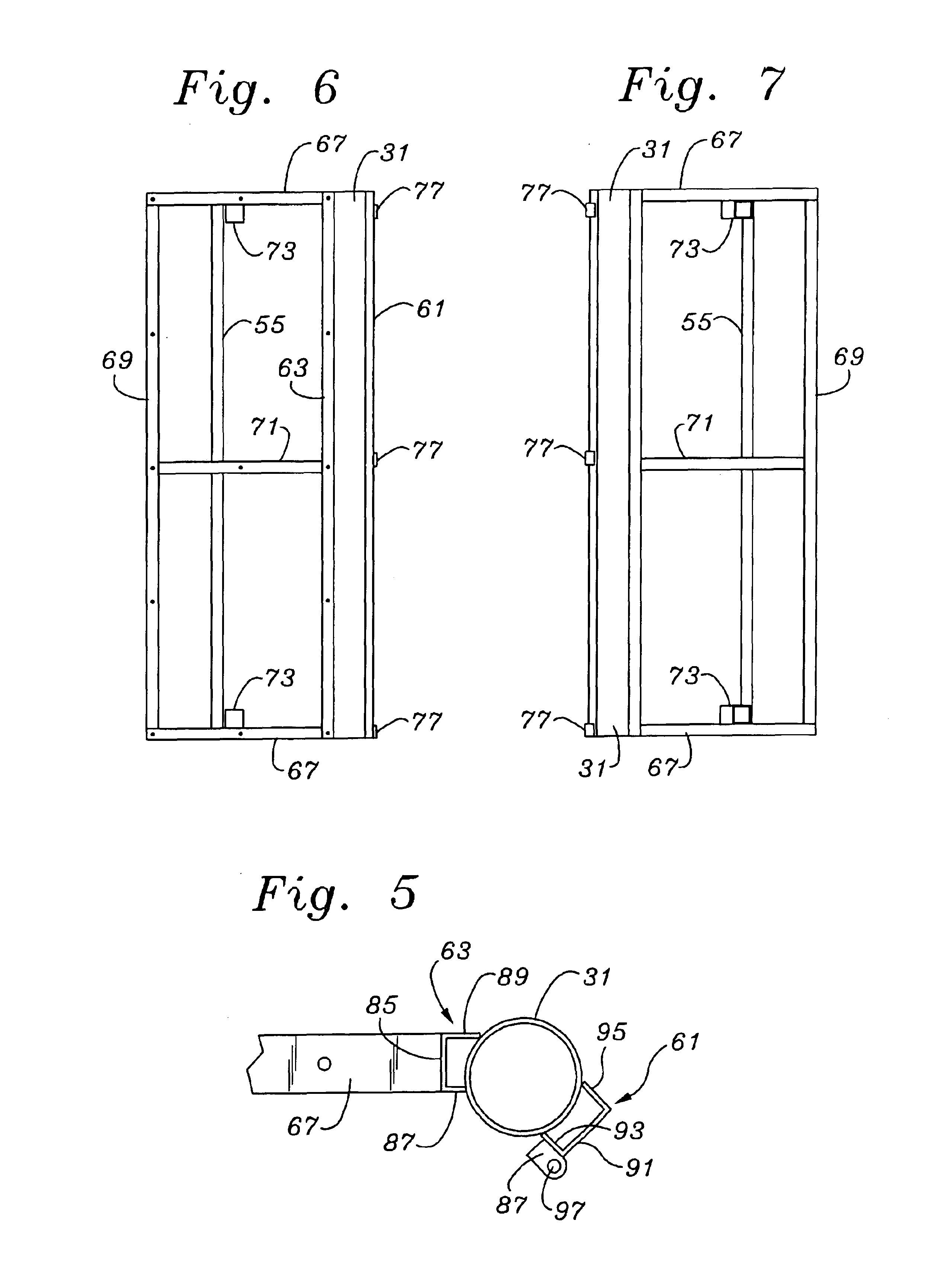Extreme sports ramp system
a technology for ramps and extreme sports, applied in the direction of amusements, construction, skiing, etc., can solve the problems of uneven surface, lack of safety inherent in make-shift non-engineered structures, and labor required to construct and de-constru
- Summary
- Abstract
- Description
- Claims
- Application Information
AI Technical Summary
Benefits of technology
Problems solved by technology
Method used
Image
Examples
Embodiment Construction
[0020]The description and operation of the ramp system of the invention will be best described with reference to FIG. 1 which illustrates a perspective view of a base configuration of a ramp system 21. The main sections of the ramp system as seen in this perspective view, from the bottom, include a lower section 23 showing an angled portion 25 to facilitate interface with the ground, a middle section 27 and a top section 29. Adjacent the top section 29 is a curved rail 31 which expresses a cylindrical section and extends the full width of the ramp system 21.
[0021]Adjacent the curved rail 31 is a nearly horizontal deck 35. One of the support legs 37 which extends from a position nearly mid-width of the deck section 35 is seen as having a slight angle with respect to the deck 35. The angle of support legs assists support of the deck 35 as users place force against the sections 23, 27 and 29. The sections 23, 27 and 29 are nearly indistinguishable because of the close fit and the fact ...
PUM
 Login to View More
Login to View More Abstract
Description
Claims
Application Information
 Login to View More
Login to View More - R&D
- Intellectual Property
- Life Sciences
- Materials
- Tech Scout
- Unparalleled Data Quality
- Higher Quality Content
- 60% Fewer Hallucinations
Browse by: Latest US Patents, China's latest patents, Technical Efficacy Thesaurus, Application Domain, Technology Topic, Popular Technical Reports.
© 2025 PatSnap. All rights reserved.Legal|Privacy policy|Modern Slavery Act Transparency Statement|Sitemap|About US| Contact US: help@patsnap.com



